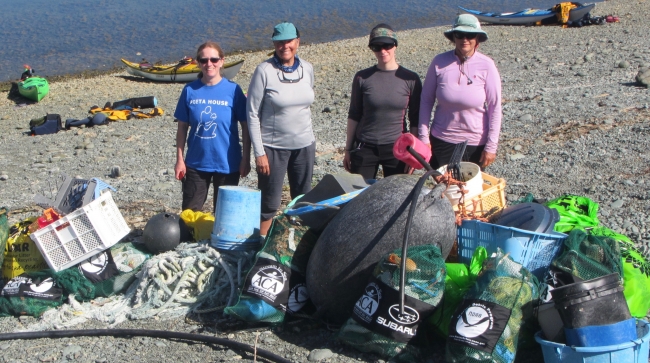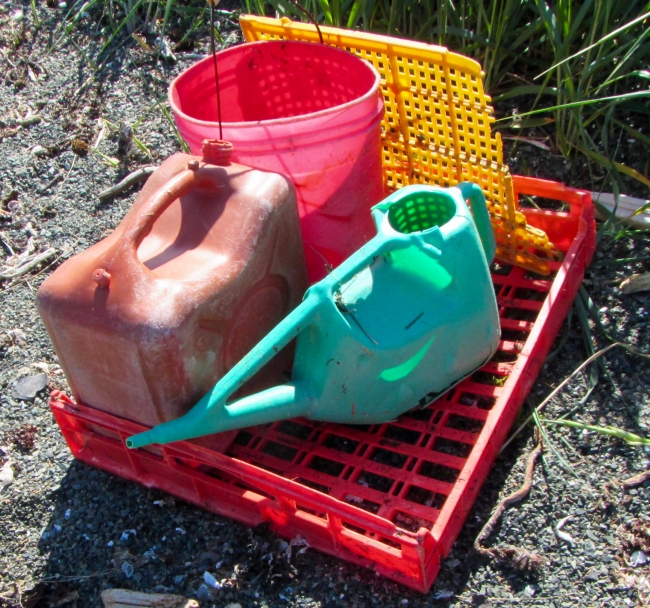By: Tom Pogson, Guest Blogger and Director of Education, Outreach, and Marine Programs for Island Trails Network
Even though Shuyak Island State Park is a remote wilderness island in the northern Gulf of Alaska, it has been heavily impacted by marine debris. Through a community-based removal grant project funded by the NOAA Marine Debris Program, Island Trails Network (ITN) led 29 volunteers from June 12th to September 4th of this year to help remove marine debris in this area. There were six teams of five to seven sea paddlers, which each spent two weeks camping and collecting debris to restore coastal habitats on Shuyak. During 56 total days of cleanup, we collected 35,036 pounds of marine debris from a continuous belt of coastal habitat (52 miles in length) along the island’s northwest shore. Cleanup teams moved freely along the coast in sea kayaks, which were a convenient means of accessing shallow rocky shorelines.
Most of the debris we collected was made of plastic and was related to marine trades such as commercial fishing and shipping. Dominant items included nets and line, floats and buoys, fish crates, and polystyrene/polyurethane floats and pieces. A wide variety of personal and household items were also represented, including plastic jugs and buckets, water and drink bottles, personal hygiene items, crates, toothbrushes, and shoes. Plastic wads from shotgun shells were also common, as were pieces of plastic “film” (such as plastic bags).
Although we found marine debris on all sampled shorelines, we noticed a striking geographic pattern in the distribution of debris. Protected bays and inlets were the least littered with debris, with 50 to 1,000 pounds of marine debris observed per nautical mile. The shorelines of tidal channels that were exposed to wind and waves and exposed outer coast beaches had greater amounts of debris, with 1,001 to 3,400 pounds of debris found per nautical mile. The distribution of debris volume showed a similar pattern, with the greatest volume found on exposed outer coast beaches (10 to 16 cubic yards per nautical mile). Protected shorelines and tidal channels were more heavily contaminated with nets and line than expected, and their removal was time consuming, which greatly slowed the progress of the cleanup along the coast.

In September, we removed all the debris we collected over the summer using a specialized 21-foot skiff and an 80-foot charter vessel, which then delivered the debris to Kodiak Island for storage and eventual disposal. To bring the project to its conclusion, ITN staff and volunteers will sort and characterize the debris to provide data for a public outreach campaign to reduce marine debris in the Gulf of Alaska.
For more information on this project, check out the project profile on the NOAA Marine Debris Program website, the Marine Debris Clearinghouse, or contact tom@islandtrails.org









